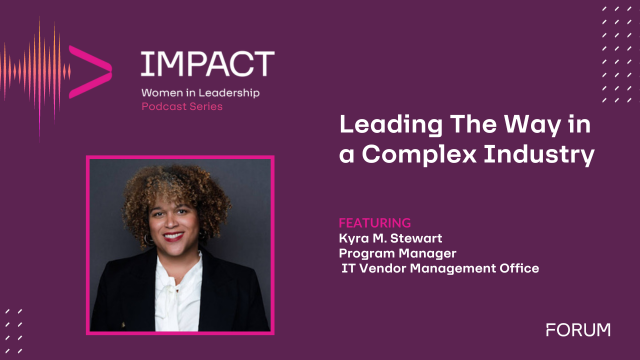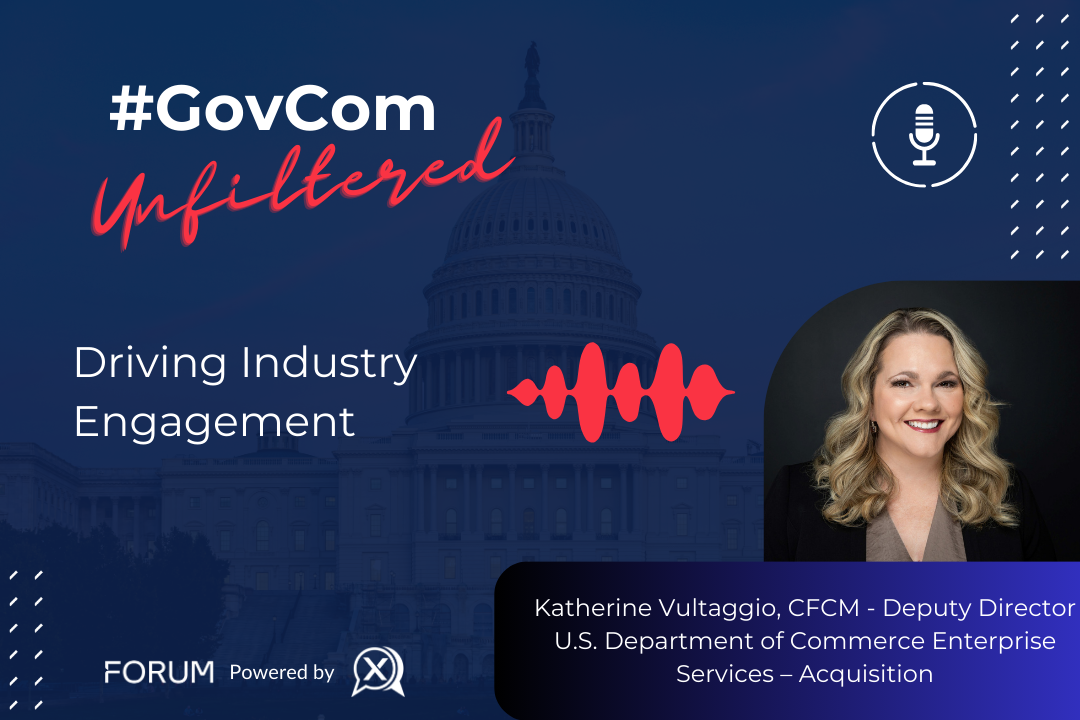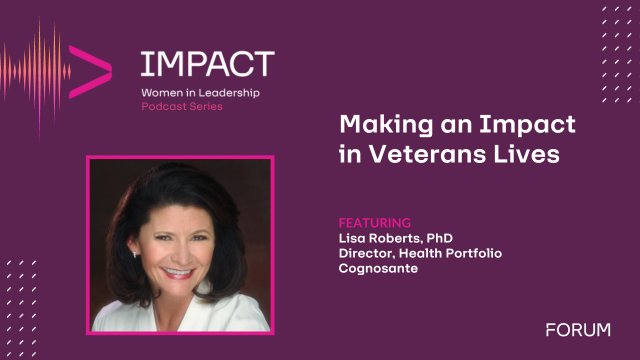An Interview With VA’s Bill James
 Just a few weeks after announcing that he would be stepping down before the end of calendar year 2019, FedHealthIT’s President, Susan Sharer, had the opportunity to speak with Bill James, the Deputy Assistant Secretary leading DevOps at Veterans Affairs to discuss his successful career, IT modernization at VA, Agile and DevOps within the Department, and his parting advice.
Just a few weeks after announcing that he would be stepping down before the end of calendar year 2019, FedHealthIT’s President, Susan Sharer, had the opportunity to speak with Bill James, the Deputy Assistant Secretary leading DevOps at Veterans Affairs to discuss his successful career, IT modernization at VA, Agile and DevOps within the Department, and his parting advice.
This article was featured in the recent FedHealthIT Winter 2020 Magazine.
How Did You Go From Coding Software to Running an IT Operation with a $3.4B+ Budget and Over Seven Thousand Employees and Six Thousand Contractors?
I started my career as GS1 at the bottom of the civil service ladder as a telecommunications clerk before moving into software. I loved the challenge of writing code and getting computers to work for us. I loved the opportunity to leverage technology to support mission critical outcomes. When you can see how technology impacts a company or influences the productivity of an agency, it’s really fulfilling. The ability to affect the mission in a positive way really clicked and that has been with me my entire civil service and private sector career. My passion for the mission has helped me to get to this place, in the best role of my career. At VA we are so close to the Veteran – they are central to the technology and services we provide. Whether we’re sitting down with them directly to test software, or whether we’re employing them here within OIT, Veterans personally touch so many of the things that we build. It is really fulfilling to know we have a direct positive impact on Veteran outcomes.
What Areas Have Seen the Most Disruption or Improvement in IT Modernization at VA in Recent years?
We have made great strides in leveraging the role of IT to focus on the enterprise. That has been a fundamental concept that has driven IT modernization into the cloud and the hallmark of what we have tried to do. When we try to put the word enterprise in front of everything we do, it forces a different conversation and perspective. When we think about modernization from an enterprise view we see savings, and increased productivity, not at the expense of customer need, but we find it can support individual business pillars. The second area would have to be our progress on the road to the cloud. VA has hundreds of applications that we have been migrating in waves, aggressively but also appropriately. This also applies to back office applications like SharePoint and email. All of this lowers costs, raises reliability and enables our staff to be more productive and empowered.
What is VA Doing to Implement More Agile or DevOps Approaches? What Challenges are you Encountering Along the Way?
VA’s journey to embrace Agile has been in the works for years, but it really started ramping up in 2016 and we have been applying Agile to product development activities ever since. Now we’re trying to be more agile about Agile, applying more modern tools and accelerating processes.
We’re getting better at building smaller and more frequent software updates, using constant and persistent security scanning, institutionalizing application performance monitoring and automation, and graduating certain projects into a more DevOps approach to releasing code into production.
 One of the challenges for DevOps to succeed is achieving a culture change. The old waterfall method of building code still exists today in some of our processes. Although small parts are Agile there are still pillars and gates to go through that are essentially compliance based. Trying to balance compliance and outcomes has been a challenge we are tackling.
One of the challenges for DevOps to succeed is achieving a culture change. The old waterfall method of building code still exists today in some of our processes. Although small parts are Agile there are still pillars and gates to go through that are essentially compliance based. Trying to balance compliance and outcomes has been a challenge we are tackling.
We know that we can have both as long as we approach it in a measured, more Agile way, with accountability and security baked in from the beginning. In some ways, there is more pressure created for the product manager with this approach, but it also makes it more transparent in terms of how and what is being delivered so it is also rewarding because it allows them more freedom to do what they need to for the customer.
You’ve Been Quite Ruthless in Your Pursuit of Moving VA to the Cloud. What has Been the Biggest Challenge with Getting VA to the Cloud and What is on the Horizon in the Cloud Space?
Cloud is transformational, both in terms of reliability and security. While it might seem simple to take one application and move it to the cloud, even if it is just a lift and shift without adding cloud capability, the reality is that one app depends on 10 others in different places, and each application that you want to move has multiple dependencies. The benefits are compelling but there is time and engineering required to address all of the interfaces.
How Does DevOps Work in a Buy-First COTS/GOTS World?
VA moved to a policy of buy before build, of COTS before custom. Moving from VistA to Cerner is probably one of the best examples but we’re doing the same across other key functions like our financial programs, supply chains, and some of our medical and benefits services.
VA is a very unique environment and there are demands for custom code – even legislation, mandates, and policies can require customization, but where there are areas we can share, we should look for those opportunities.
When we think of COTS and GOTS, we are living the DevOps principle which is really about empathy for the customer, about thinking of their need and giving them a modern solution more quickly.
Many of our apps are one-offs and if there is something that needs to change, our application space is ripe with opportunity. If we can use something shared and a change needs to be made, we are also sharing costs. By amortizing that cost across all of the users, the taxpayers get a bargain; they get the bang but are only paying part of the buck.
What Part of Your VA Work are You the Most Proud of and Why?
I’m really proud of the empathy and customer integration that has come through the MISSION Act. In a lot of ways we have become closer to our customer. Part of the MISSION Act activity coined the term shoulder to shoulder and that has become a call sign between us (the IT community) and the customer (VHA) as an indication that we are in it together and working together towards a common goal. That moment when we acknowledged that we share pain and share the challenge and joy of accomplishing something has made me the most proud.
This in itself is a real culture shift for VA, and whether you’re in public or private sector, culture is the hardest thing to change in an organization. The internal IT culture and customer relationship changes resulting from the MISSION Act implementation had a positive effect across our entire organization. From developers to clinicians, and from VA/IT headquarters to the local IT area managers across the country, our team put customer service first. The collaboration from the MISSION Act initiated a different way of working together, based on an investment made that is now paying off. We are seeing a new relationship in the field between medical center directors and local IT area managers. We still have a long way to go and other hills to climb, but we will continue to work together more quickly and with the users directly involved. We have always had passion but now there is a special energy and that newfound energy makes you go a little further every day.
If You Weren’t Retiring and Could Keep Your Disruptor Hat on at VA for Another Year, What are the Next Three Things You Would Tackle?
- I think one thing we should be doing is in-sourcing some of the work currently performed by contractors. I understand there are certain things best done by the private sector community, e.g. commodity things they do well. I have spoken though with many organizations that are pursuing their own DevOps journey. There is a lot of evidence to support the idea of in-sourcing the talent and skillsets needed to perform effectively in the DevOps model. We have a lot of talent and skillsets in-house but we need more which means improved training of our current workforce and hiring more civilians to increase our technical skills.
- I would also focus on the new in telecommunications. As an example, if you think about new networking capability 5G offers and the benefits that will accrue to Veterans through 5G – that will be game changing.
- I am also excited about the use of Robotic Process Automation (RPA), AI and bots to manage our infrastructure and applications. I believe we should use computers to manage computers and enable automation to help us be better, faster, and cheaper. We have a lot of Internet of Things (IoT) in hospitals that need computers to manage. That technology is coming around and will enable us to do our job more powerfully.
If You Could Give VA OIT a Commencement Speech as You Say Farewell, What Three Things Would You Leave Them With?
One of the biggest lessons I have learned is that you need to keep the customer close, make them part of the process, work with them shoulder to shoulder and good things will happen. Even when there are challenges, be open and transparent and then you both own the challenge and the success.
I would also remind them to be willing to fail small and fast, and to try again. Using Agile, balance compliance with outcomes to build faster pilots, test cases, and the opportunity to move code.
Do the right things for Veterans and your colleagues, and you will make this organization a better place.
Finally, I would say that people are our greatest resources. Empower them to be successful, allow people to truly work together and we will be successful.
ABOUT BILL JAMES
 A high-energy executive with extensive experience in the Federal information technology market, Mr. Bill James joined the Department of Veterans Affairs (VA) as an SES in the CIO organization in October 2016. Mr. James serves as Deputy Assistant Secretary for DevOps in the Office of Information and Technology (OIT). As DAS DevOps, Mr. James oversees IT organizations that deliver mission-critical enterprise-wide IT products and services to 650,000 end users at 2,300 facilities – while effecting a cultural transformation in how VA delivers outcomes by shifting the culture to a DevOps approach—focused on innovation, Agile principles, cloud and modern tool sets — so that VA can roll out better products at a faster pace for its customers. Prior to joining the VA, Mr. James worked as an executive in the private sector for companies serving the Federal IT market. Mr. James led business operations, growth and R&D organizations in businesses that provide Federal agencies with modern, reliable and secure end-to-end IT services. Before that, Mr. James served as a civil servant (GS1 to SES) in the Department of Defense and Intelligence Community where he led large enterprise-level IT organizations and programs. Well-known in the Federal IT community, Mr. James is a “Fed 100” winner which recognizes Government and industry leaders who have played pivotal roles in Federal IT.
A high-energy executive with extensive experience in the Federal information technology market, Mr. Bill James joined the Department of Veterans Affairs (VA) as an SES in the CIO organization in October 2016. Mr. James serves as Deputy Assistant Secretary for DevOps in the Office of Information and Technology (OIT). As DAS DevOps, Mr. James oversees IT organizations that deliver mission-critical enterprise-wide IT products and services to 650,000 end users at 2,300 facilities – while effecting a cultural transformation in how VA delivers outcomes by shifting the culture to a DevOps approach—focused on innovation, Agile principles, cloud and modern tool sets — so that VA can roll out better products at a faster pace for its customers. Prior to joining the VA, Mr. James worked as an executive in the private sector for companies serving the Federal IT market. Mr. James led business operations, growth and R&D organizations in businesses that provide Federal agencies with modern, reliable and secure end-to-end IT services. Before that, Mr. James served as a civil servant (GS1 to SES) in the Department of Defense and Intelligence Community where he led large enterprise-level IT organizations and programs. Well-known in the Federal IT community, Mr. James is a “Fed 100” winner which recognizes Government and industry leaders who have played pivotal roles in Federal IT.












